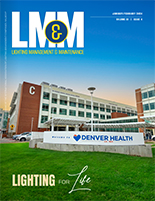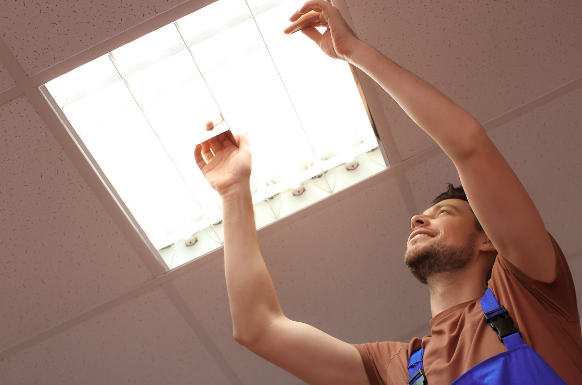Over the past several years, a variety of lighting trends have combined to impact the school and higher education lighting retrofit market. One example is the plummeting cost of LED lighting products. LED tube lamps, also known as TLEDs, have seen dramatic price reductions from $10-$20 per tube (manufacturer price) in 2018, down to some TLEDs under $4 per lamp (manufacturer price), only 4 years later. In fact, LED tubes are now similar in cost to the fluorescent tubes that they’re replacing.
As a result, many schools are now seeing return on investment (ROI) for lighting retrofits of under one year, especially where utility rebates are applied. According to Flemming Jensen, SVP of Sales & Marketing, at Espen Technology, a leading manufacturer of linear, indoor LED retrofit products, “The cost reduction of LED tubes to the pricing of fluorescent tubes has created a big increase in school retrofit projects for us across the U.S.” Jensen added, “Schools also are becoming much more aware of the impact of light color and quality on student performance, and want to upgrade not just from fluorescent to LED, but also improve the color and CRI of their lighting, to give the students every advantage in class.”
To avoid disrupting classrooms, many lighting retrofits either occur in the Summer months, or over-night. School districts, colleges, and universities need to be planning early for any Summer retrofit projects. During this time of supply chain disruption, some manufacturers have good inventories of retrofit products, but many are experiencing painful shortages and delays. Jensen at Espen stated, “Solid inventory on the most important Type B TLEDs, Type C TLEDs, and flat panel retrofit kits has enabled our school customers to get the products they need to meet their retrofit timelines.”
With many public school districts devoting their capital improvement budgets to pandemic preparedness, indoor air quality, and touchless fixtures, performance contracting by energy service companies (ESCOs) lets the lighting retrofitting company pay all of the upfront cost of the lighting retrofit, and collect its fees as a portion of the school districts’ electricity savings, in going from fluorescent to LED lighting. According to Jensen, “the vast majority of the public school projects we’re seeing are financed through an ESCO performance contract.”
Examples of products that are trending in school lighting retrofits include:
- CCT- & Output Selectable LED Flat Panel Retrofit Kits. Espen’s versaKit 3-CCT & 3-output flat panel was recently used in a number of large school district projects. These kits give the look of a clean new fixture, with much less labor than a full fixture replacement, because the existing fixture housing is utilized, without disturbing the ceiling.
- Type B TLEDs operate on line voltage and by-pass old fluorescent ballasts. These lamps have dropped from 18W to replace a 32W fluorescent tube down to as little as only 10W. These Type B TLEDs also eliminate the scenario of the fluorescent ballast failing in the future, and requiring expensive maintenance. The power supply circuitry is built into the Type B tube eliminating a separate driver.
- Type C TLEDs operate with a separate driver component and lamp. The driver is analogous to the ballast in fluorescent systems. The advantages of Type C TLEDs are longer system life and higher system efficiency than the simpler Type B systems.
- Advanced control systems. Some schools districts and high education institutions want to be able to monitor every light fixture in all of their school buildings. These systems alert facility managers to failed lamps or fixtures, for prompt maintenance. Others want to be able to monitor their energy savings over the long term if they have committed to an ESCO performance contract. Utility rebates have increased in availability for many types of control systems, further reducing the ROI for combines LED lighting plus controls.
Reducing maintenance costs is also a big motivation in school retrofit projects. According to Espen’s Jensen, “In 2016, a Michigan school district retrofitted over 40,000 LED tubes from Espen. After 6 years, they have only requested replacements for 10 reported lamp failures, in that time. That’s only 0.025% failure on Espen’s lamps. The resulting maintenance savings has been enormous for this school district.”
For more information about Espen’s extensive line of LED retrofit solutions for schools, email [email protected] or visit www.EspenTech.com.
About Espen Technology
Espen Technology Inc. is dedicated to designing and manufacturing high quality, high performance linear LED lighting components. With operations and facilities across the world, Espen Technology offers competitive products with the highest quality. Headquartered in Southern California, Espen Technology offers personalized sales, expert technical support, and efficient logistics to all of its customers. Espen’s LED products are designed and perfected with pride in the United States.
###




